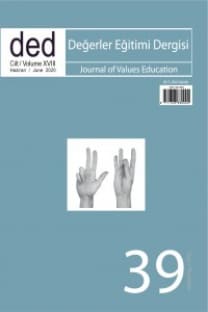A Bibliographic review of literature on Imam-Hatip high schools
A Bibliographic review of literature on Imam-Hatip high schools
Imam-Hatip schools are a part of the Turkish Education System in which both modern sciences and Islamic subjects are taught as compulsory courses at the secondary level. They were founded in 1924 for the purpose of training religious functionaries according to the Unification of Education Act. These schools became one of the most talked about and debated institutions in terms of their status, structures, functions, curriculums, alumni during the Republican era. This article aims to analyze and gather researches in Turkish and English which have been made on Imam-Hatip schools. For that purpose, a bibliography on these schools is provided in the article. The bibliography consists of 27 books and reports, 4 book chapters, 32 refereed articles, 43 conference papers and 49 dissertations. In total, 155 studies between the years of 1951 and 2011 have been founded on the subject. Most of the studies had been conducted after 1983. 19 studies in English and 136 studies in Turkish have been published. Also, Turkish studies have been restrictedly conducted by the other social sciences except Divinity Faculties in Turkey. With the descriptive analysis method, these studies are classified in terms of their context and gathered under five groups as biased, historical, sociological, educational and stakeholder-oriented themes. These themes are subjected to assessment with respect to discourse models which, in the widest sense, are defensive discourse and critical approaching discourse to Imam-Hatip Schools. Also, examples are given under the themes from studies which have been regarded by researchers. The results of the article can be summarized in a few points. The first result is that all of the studies published in English have provided an introduction and explanation for Turkey’s Imam-Hatip Model. Almost all of the studies published in Turkish examined various aspects regarding the education and training process or the historical evolution of these schools. The other result of the research involves the biased studies which have been made on Imam-Hatip Schools. When they are examined, it is concluded that Imam-Hatip schools have been made one of the instruments of conflict between the defensive discourse and the critical approaching discourse in the case of Imam-Hatip Schools. As to the former, these schools are instruments to spread their Islamic perspectives or Turkish-Islamic ideals, while to the latter, Imam- Hatip schools are a threat to achievements of the Republican regime. According to certain studies given in the bibliography, these schools are also instruments which had been used by governments in the past against the threats of communist and extremist Islamic movement. Another result of the research is that most of the studies on the subject are focusing on the existence and the legality of Imam-Hatip schools, because of debates on these schools between defensive and critical approaching discourses. As a result of this situation, the qualified studies regarding the education and training process of these schools have remained limited. The last result is that the historical studies on Imam-Hatip schools have been made in the merely chronological order without relating them to social-political dynamics, which calls for a dynamical conception of history. In other words, there aren’t any studies which have examined the historical evolution of Imam- Hatip schools together with national and international developments in a cause and effect relation.
___
- Kara, İ. (2008). Cumhuriyet Türkiye’sinde bir mesele olarak İslam. İstanbul: Dergâh Yayınları
- Parmaksızoğlu, İ. (1966). Türkiye’de din eğitimi. Ankara: MEB Basımevi
- Sakaoğlu, N. (2003). Osmanlıdan günümüze eğitim tarihi. İstanbul: İstanbul Bilgi Üniversitesi Yayınları
- Savaş V. (2000). İrtica ve bölücülüğe karşı militan demokrasi. Ankara: Bilgi Yayınları
- Tanilli, S. (2002). Uygarlık tarihi. İstanbul: Adam Yayınları
